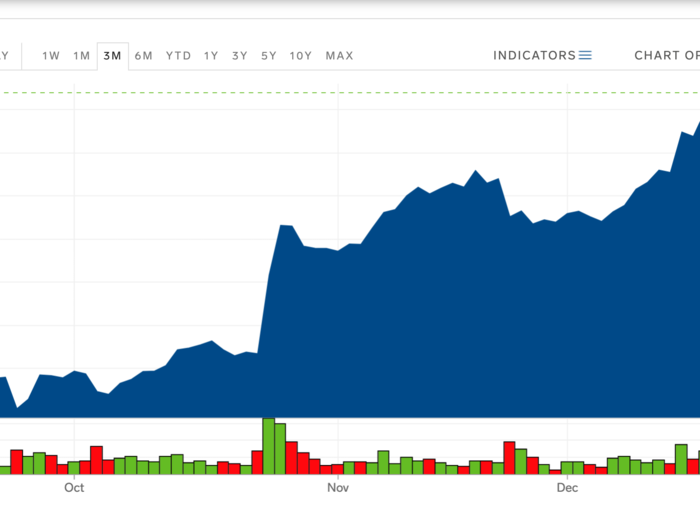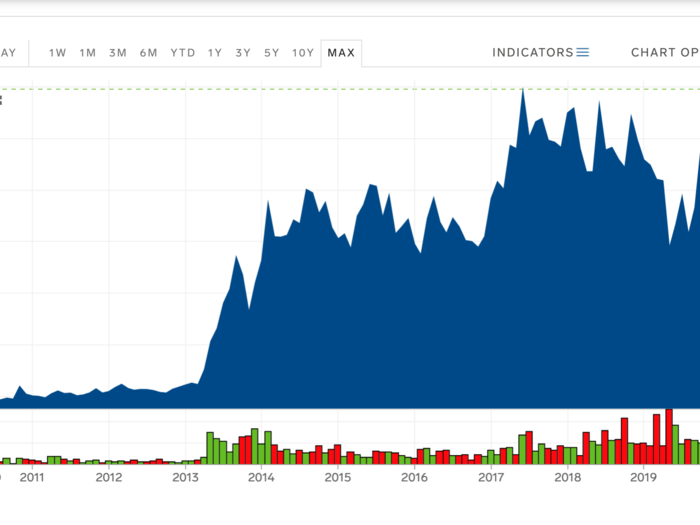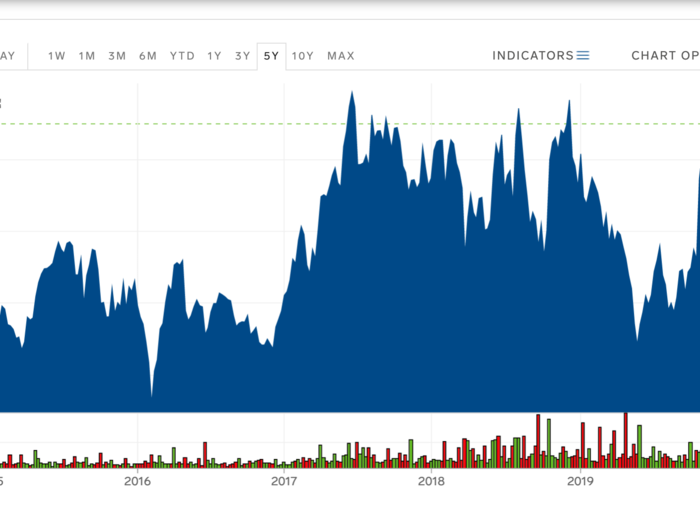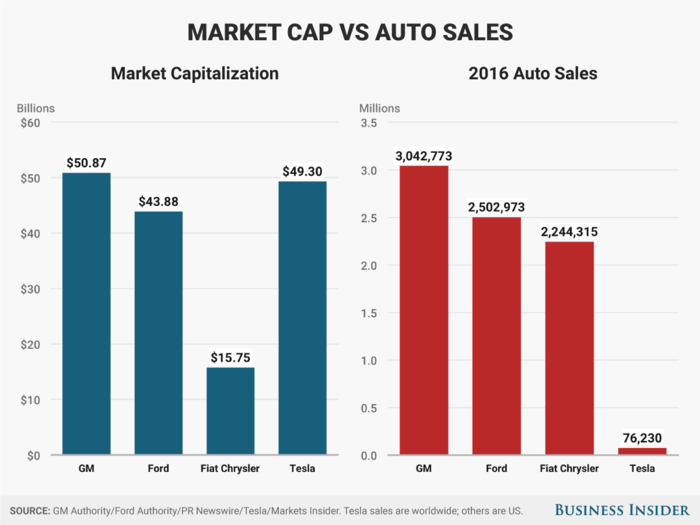- Home
- slideshows
- miscellaneous
- These charts show how the era of rampant Tesla stock volatility could be coming to an end
These charts show how the era of rampant Tesla stock volatility could be coming to an end
Tesla's year-to-date stock-price history looks ... like something that isn't for the weak-kneed.

BUT! Here's the past month. Since November, the rally has been smooth and steady, up and to the right.

Now this looks more like how an auto stock trades.
Prior to 2019, Tesla was basically a rinky-dink carmaker in the high-risk part of a market in electric cars that's still extremely small.
But with 2019 almost in the books, a lot more EVs are coming to market from other companies, and Tesla itself is on track to sell notably more vehicles than it did last year, when it delivered about 250,000.
Tesla is also expanding into China, where most of the globe's future auto-sales growth should happen, and the company plans to build a new factory in Europe (EV growth in Europe could also be solid, as the continent moves away from diesel).
In other words, Tesla fundamentals have improved demonstrably in 2019. The reward is a much more rational level of optimism among investors.
In fact, you could now articulate a buy-and-hold strategy for TSLA that mimics the opportunity that the company's earliest public investors enjoyed.

Volatility notwithstanding, if you bought Tesla in the first year or so after its 2010 IPO and have held on, you are sitting pretty.
But "bargain Tesla" only lasted for about two years.
What's spooked investors seeking a similar absolute return has been the volatility. But if you look at the chart above, you can see that the increase in 2019 parallels Tesla's 2013 takeoff.
Eventually, that put Tesla above $200. If Tesla can permanently park itself above $400, then history could repeat itself.
True, you missed out on the $200-to-$400 opportunity. But how does $400-$600 strike you?
Beware, however! Tesla giveth, but Tesla also taketh away.

Tesla's fundamentals could allow for shares to trade around $400 for a while. But speed bumps abound.
The biggest is that Tesla has to expand its business to resume its revenue growth, which has stalled after steadily increasing during the volatile years (revenue growth was a port in the storm for longer-term investors).
The challenge with business expansion in the auto industry is that it's both staggeringly expensive (developing a new vehicle costs $1 billion, and a new factory could cost even more) and highly dependent on consumer confidence and credit conditions.
The bottom line is that it costs a lot of money to buy into a business that experiences big up and down cycles.
We created this chart in 2016, when Tesla's market cap made it the second-largest US automaker, by that metric — but a distant fourth as defined by sales.

Tesla's sales have improved dramatically, but the company is still nowhere near the Detroit Big Three and won't get there for years (if ever).
So the huge disconnect between market cap and sales performance remains.
And here's the thing: if Tesla stock is indeed calming down, it now absolutely must grow sales and grow sales predictably. The pattern for all other automakers since about 2013 has been one of rising sales and steady profits.
Tesla hasn't participated in that. So while GM, for example, has bolstered its balance sheet with $100 billion in profits, Tesla has lost money, for the most part, and used optimism about its future to tap equity markets for funding.
So for Tesla to sustain itself and disconnect from endless capital raises, it needs to execute reliably, at least until an inevitable sales downturn penalizes the entire industry.
A word of caution: the current sales boom has lasted for five years. That's a long time in the car business. So while Tesla could at last be entering its happiest-ever phase, it's coming to that bliss pretty late in the game.
Popular Right Now
Advertisement